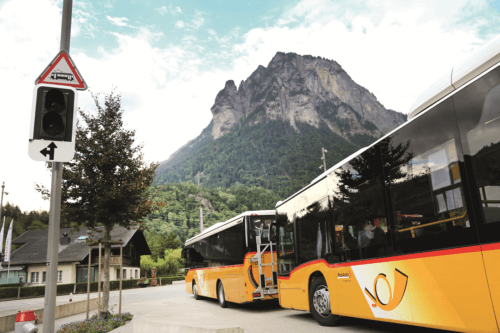
Jonathan Welch recounts a few journeys on buses in Switzerland, though not everything ran according to plan
The Swiss public transport network is often lauded as one of the best, and as regular readers will know, I spent a few weeks in Switzerland late last year looking at a number of operations for features, many of which have already appeared in these pages. It also provided a good opportunity to travel on a few buses as a passenger, and see some more of the beautiful countryside whilst also keeping an eye on the buses, operations and passengers with a degree of professional curiosity.
I set out with the aim of recounting a few tales of everyday bus journeys on roads which seem spectacular to a first-time passenger, but which drivers take in their stride: Hairpin bends, breathtaking scenery, tourists and of course the iconic tee-tuu-taa of the post horn. As it turned out, it would be a couple of journeys which would highlight an entirely different aspect of the driver’s role, and a side to the job that many rarely consider; the idyllic image you may have flicked past on the contents page hides a much less idyllic story.
Schwarzwaldalp
My first journey would be one which highlighted some of the narrow and winding roads so typical of the local area and of the routes operated by PostBus; many operate year-round and offer a valuable service to locals, but some are aimed at the large crowds of tourists who visit each year to enjoy the spectacular landscape and outdoor activities it offers. Boarding from a road-side stop between the towns of Meringen and Innertkirchen, I hopped aboard a 10.8-metre Iveco Crossway on route 164 to Schwarzwaldalp as it turned off the main road and started its journey up the narrow mountain route.
Almost immediately, we passed a small hydro-energy facility, a common sight hereabouts, and shortly after we passed without stopping a small wooden toll hut where car drivers must halt and pay before proceeding upwards.
[…]By subscribing you will benefit from:
- Operator & Supplier Profiles
- Face-to-Face Interviews
- Lastest News
- Test Drives and Reviews
- Legal Updates
- Route Focus
- Industry Insider Opinions
- Passenger Perspective
- Vehicle Launches
- and much more!


